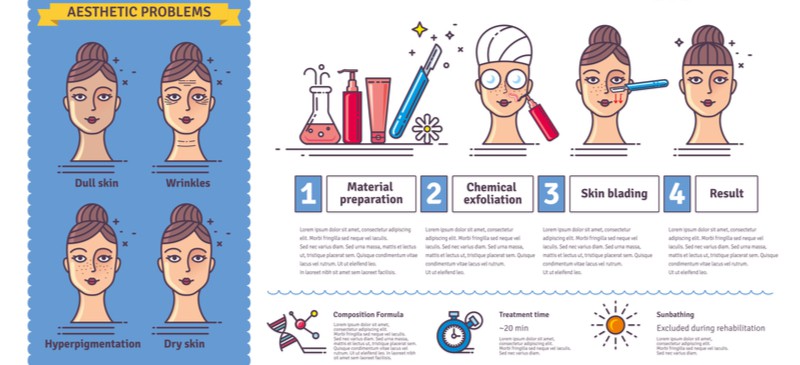This Dr. Axe content is medically reviewed or fact checked to ensure factually accurate information.
With strict editorial sourcing guidelines, we only link to academic research institutions, reputable media sites and, when research is available, medically peer-reviewed studies. Note that the numbers in parentheses (1, 2, etc.) are clickable links to these studies.
The information in our articles is NOT intended to replace a one-on-one relationship with a qualified health care professional and is not intended as medical advice.
This article is based on scientific evidence, written by experts and fact checked by our trained editorial staff. Note that the numbers in parentheses (1, 2, etc.) are clickable links to medically peer-reviewed studies.
Our team includes licensed nutritionists and dietitians, certified health education specialists, as well as certified strength and conditioning specialists, personal trainers and corrective exercise specialists. Our team aims to be not only thorough with its research, but also objective and unbiased.
The information in our articles is NOT intended to replace a one-on-one relationship with a qualified health care professional and is not intended as medical advice.
Is Dermaplaning Safe? Potential Benefits, Risks, Side Effects & More
October 18, 2020

Looking for a non-invasive way to tackle multiple skin issues at once, such as roughness, dullness, breakouts and fine lines? Then you might consider trying dermaplaning, a trendy skin care treatment that involves “shaving the face” in order to promote skin cell turnover.
What is dermaplaning exactly, and is effective and safe? As explained more below, this professional treatment works by scraping off dead skin cells, small hairs and bacteria from the surface of your skin, revealing healthier skin that has an overall brighter appearance.
What Is Dermaplaning?
Dermaplaning, a form of dermabrasion, is an exfoliating treatment performed by a dermatologist (a doctor who specializes in health skin). It involves gently scraping the top layer of the skin (called the stratum corneum) with a clean surgical scalpel.
According to the American Society of Plastic Surgeons, the goal is to “refinish” the skin’s top layers and remove dead skin cells from the surface of the skin in order to improve how smooth, even and bright the skin appears.
Potential Benefits
What are the benefits of dermaplaning? Most people choose to have this procedure done in order to help reduce wrinkles and fine lines, uneven skin tone, “dullness,” and acne breakouts.
Dermaplaning can also reduce “peach fuzz” facial hair (technically called vellus hair), although not permanently. (It will grow back, unlike with laser treatments.)
Here’s more about the potential benefits of dermaplaning:
1. Helps Exfoliate and Brighten Skin
By helping exfoliate the top layer of the skin, this treatment can improve skin smoothness, get rid of “peach fuzz” and reduce dullness. It may also be useful for tackling issues like blotchiness due to sun damage, as well as dry skin or scaly patches that can make skin look lackluster.
2. Smooths Skin Surface and Improves Texture
Some people turn to dermaplaning in hopes of decreasing wrinkles, fine lines, hyperpigmentation and scars. While some other dermatological treatments may be more effective at combating wrinkles and other issues, such as laser treatments or application of some topical products, it’s possible for dermaplaning to overall help skin look more youthful since it encourages skin cell turnover and regeneration.
In order to get the most benefits from this procedure, use a non-toxic sunscreen on your face regularly in order to prevent burning and sun damage. Most dermatologists generally recommend applying a sunscreen of at least SPF 30 to your face on most days.
3. May Help Reduce Breakouts
By removing dead skin cells from the skin, dermaplaning may reduce clogged pores and pimples that are caused by trapped bacteria.
One thing to be aware of, on the other hand, is that people with cystic acne or open scabs from picked pimples should avoid dermaplaning, since this can cause irritation and bleeding that can worsen the problem.
Another benefit of these treatments is a potential decrease in the appearance of post-acne scars and dark spots.
4. Can Help Improve How Well Skin Care Products Work
After a dermaplaning treatment, you’ll benefit even more from applying high-quality skin care products to your skin, since your skin will be able to absorb more of the ingredients once it’s exfoliated.
Now’s the time to nourish your skin with products such as moisturizing virgin coconut oil, hyaluronic acid, retinoid creams, beauty-boosting essential oils, etc. If you’re not sure which products are best for you to apply afterward based on your skin type and goals, definitely ask your dermatologist for advice.
In some cases, your doctor might also recommend a dermaplaning treatment prior to another procedure, such as a facial, laser, microdermabrasion or chemical peel — although this depends on your specific skin type.
Related: Microneedling Benefits for the Skin
Risks and Side Effects
What are the side effects of dermaplaning? Overall, it’s considered a safe procedure for most people.
However, those with very sensitive skin, or conditions such as rosacea, keratosis pilaris or cystic acne, should probably avoid this procedure or at least proceed with lots of caution. (If this applies to you, always visit a professional rather than attempting to DIY at home.)
After a procedure is performed, temporary dermaplaning side effects can include redness, irritation and itchiness. This should go away within a couple of days, but if side effects worsen or become severe, it’s best to call your doctor for advice.
Can you wear makeup after a treatment? While it’s not harmful to wear makeup after a treatment, ideally you want to let your skin “breathe” for about a day.
This can help prevent your skin from absorbing too much makeup, which may trigger a breakout or irritation. Once your skin settles down, you’ll probably find that your makeup goes on more smoothly and looks better than ever, given that your skin will be smooth and hair-free.
Here’s another concern that some people have: Does hair grow back thicker after dermaplaning? According to experts, no — your facial hair should not grow back any thicker, even though it may temporarily feel more prickly when it’s short.
It will eventually grow back to the same amount that it was prior to the treatment, but this might take some time.
What to Expect
While the cost of a dermaplaning treatment ranges depending on where it’s performed and by whom, on average each treatment costs about $150 to $250. Because it’s an elective cosmetic procedure, it isn’t covered by insurance, which means you’re responsible to pay the full amount each time.
Dermaplaning treatments are performed in a doctor’s office, whether at a dermatologist or by another licensed health care provider, such as a medical aesthetician or plastic surgeon. The procedure involves the use of a thin scalpel that gently scrapes away the top layer of the skin.
Most people find that this is a painless procedure that doesn’t require much recovery afterward, although skin may appear red for a day or sometimes longer. During the procedure you can expect to lay down in a chair while the doctor holds your face and scrapes small patches of the skin using back and forth motions.
Many say that even after one treatment they notice improvements in the feel and appearance of their skin. The more treatments you have done, the better the results should be, although it’s important to space out treatments by at least one month or more so the skin does not become too irritated.
Is It Safe to Do at Home?
Can you try dermaplaning yourself at home? While you can use a regular razor to shave the surface of your face, it won’t work quite as well as a scalpel that is used professionally by a dermatologist.
Most standard razors have three to four slanted blades, but during a professional treatment a single-edge scalpel with one blade is used in order to get closer to the skin.
Shaving your face is considered a “cheaper, DIY option” of dermaplaning and may have some benefits, such as temporarily making your skin feel smoother, but it’s unlikely to remove as many dead skin cells as a real dermaplaning procedure. If you do decide to try shaving your face, be sure to use a clean razor, some type of cream or lubricant, and to be very gentle (less is more).
You can now find a number of DIY dermaplaning blades online and in some makeup/beauty stores — just be sure to start slow and always follow directions.
Be careful to avoid applying products containing acids to your skin for at least several days afterward, including retinol and benzoyl peroxide, which will trigger irritation.
Conclusion
- What is dermaplaning? It’s a skin care procedure performed by a dermatologist that exfoliates the surface of the skin using a scalpel. This helps remove dead skin cells and facial hair, which can brighten skin and improve its texture.
- Potential benefits of this procedure can include improved smoothness and reduced wrinkles, lines, breakouts, dryness, blotches and peach fuzz.
- On average, treatments cost about $150 to $250 and are done about once every month or several months. While it’s generally safe, potential dermaplaning side effects can include redness, irritation, increased sensitivity to sunburns and breakouts, and bleeding. It’s best to keep skin clean and moisturized for about a day after a treatment, which means no makeup if possible.













Comments